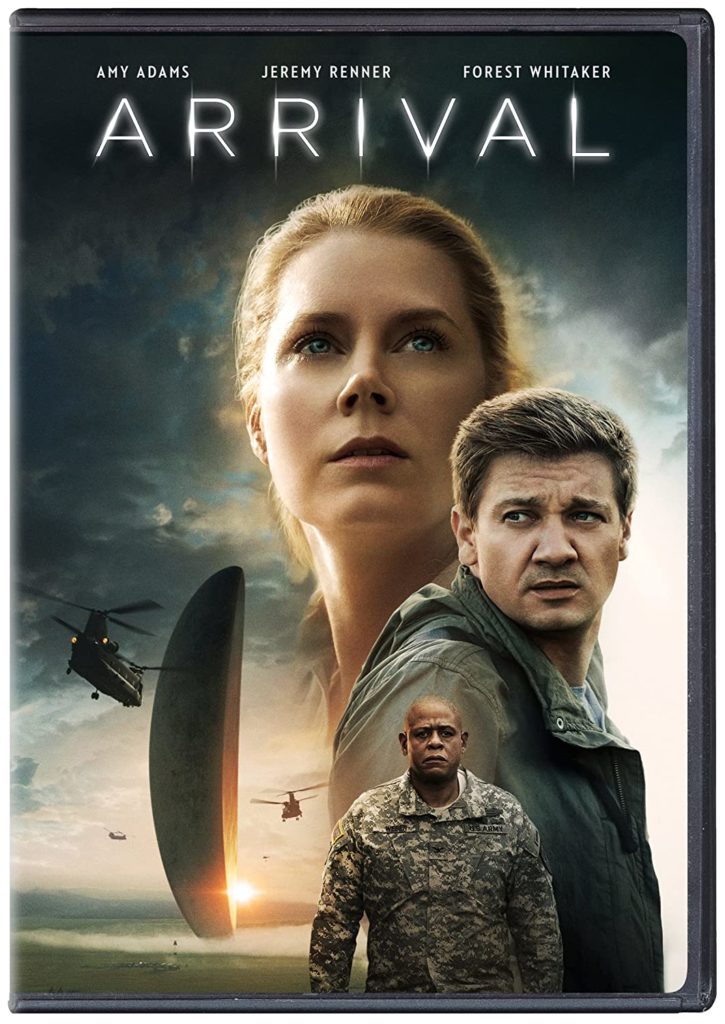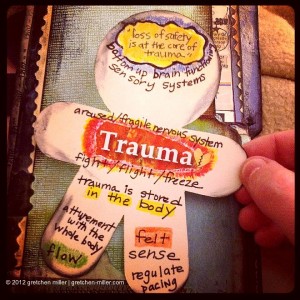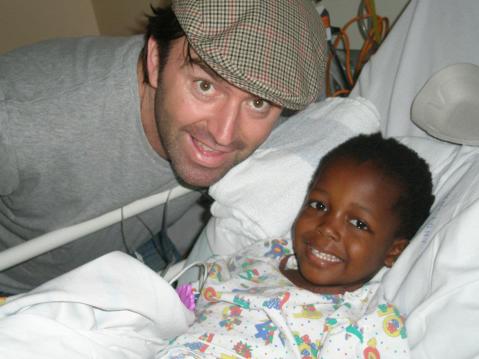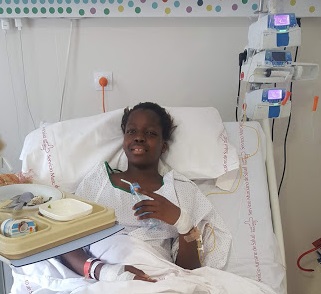By E.F Nicholson
Before I launch into this article I need to give a clear “spoiler alert”. In order to explore the key themes I would like to address, I need to reveal the fundamental plot twist, so if you haven’t seen the movie “Arrival” it will definitely spoil it. If you haven’t watched the movie, my suggestion is to go ahead and watch it, and then come back and read this, as it’s one of the best movies I have seen in a long time. If you think you won’t be bothered either way, please proceed but spoilers do await!
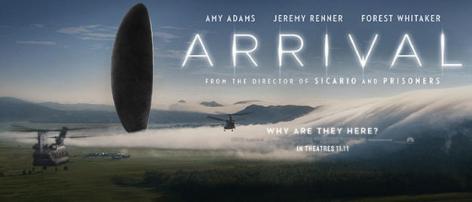
The movie Arrival is in the “aliens land on earth” genre. Yet unlike most other movies within the alien genre, it’s not a horror or action movie. Rather it intelligently explores the very human themes of our experience of time, language and the nature of our relationships. One of the major themes of the movie raises the question of how we understand and experience time. Although that is one of the biggest themes that could be looked at, in this article I would like to look more at how that shift in understanding of time impacts the main character’s understanding of life and relationships.
The movie starts with a powerful and heartbreaking montage of the birth of the main protagonist Louise’s (played by Amy Adams) daughter, her growing up and moving through her childhood until it shows her daughter’s eventual tragic death. This happens during what appears to be in her late teens from some type of disease. The movie then shows Louise as a somewhat sad and isolated professor of linguistics, who is getting on with life after the death of her daughter. Then aliens show up and she is recruited by the army to try help them communicate with the aliens to find out what their purpose is and what they want. Here she meets the astrophysicist professor Ian (played by Jeremy Renner), and together they gradually understand and learn to communicate with the aliens in their language. The alien language turns out to be made of complex symbols, which they eventually understand don’t contain any reference to the past or future.
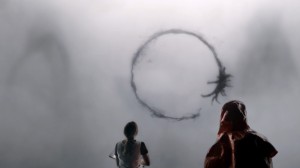
As Louise gets more immersed in the alien language, we see her having what appears to be flashbacks of her daughter’s childhood and eventually death. Yet the big plot twist is revealed at the end of the film when Louise asks the aliens, “Who is the child I keep seeing?” Its then it shown that it’s not flashbacks that she has been having, rather flash-forwards of her future. As the whole premise of the movie questions linear time, we are unware that the beginning of the film isn’t set in the past, rather the future. The aliens’ gift to humanity is their language, which will enable humans to experience time in non-linear way, in return for the help they will need from humans 3000 years from now.
So we come to know that the tragedy of her daughter’s death isn’t past memory but future vision of what’s to come. We see in her future the astrophysicist Ian who will be her husband and the father to her daughter. Depending on how you want to see it, she is either gifted or cursed with knowing what will happen in her future. Now how the question of how free will intersects with the nature of the future and past being contained in the present is another subject I think smarter minds could explore. What I found most touching and impacting in this film was the fact that Louise consciously chooses this future, knowing it will inevitably end in the tragic death of her daughter who she will name Hannah (a name which is a palindrome, which is a nice bit of symbolism tied in). She narrates the last section of the film speaking to her daughter: “Despite knowing the journey and where it leads, I embrace it and I welcome every moment of it.”
Unlike Louise, none of us have a definitive vision of what our future will hold, yet we can be guaranteed of some things. We know we will eventually die and for most of us the “when” is most likely out of our hands. We know those we love will also die, in a same manner which will fall outside of our control. We know we will suffer loss, and the depth of that loss and pain will be equal to the depth of attachment and connection to that which we lose. As a father, watching the scenes of Hannah living and then dying seemed even more heartbreaking, not as a past event but a future one. As if I imagine the loss of either of my daughters in the same manner it fills me with fear, anguish and dread. Yet what fate befalls them, if I am truly honest I don’t know and can’t know.
The movie presents Louise with a fork in the road, a choice that we will all face in life. Knowing that pain awaits, do we shy away from life and attachments to shield ourselves from the inevitable loss? Or rather like Louise states, do we “embrace it and welcome very moment of it”? Do we accept the price of all the love and beauty is its eventual loss found in the temporal nature of everything, not as something to lament or avoid, rather celebrate and accept? Life seems to be presenting us with these constant choices of do we contract in fear, or open our hearts in love? For me this isn’t a choice we make just once, rather it ends up needing to be reaffirmed over and over. That, for me, was the takeaway of the film. How would I live my life without fear of pain? How do I choose to love more fully and more wholeheartedly, with the knowing that yes, great pain will knock on my door but that’s ok. Knowing that suffering will befall me and to those I cherish but not to be seen as thing to avoid but a process to honour.
After my daughter recently had an operation on her hip, knee and ankle, her whole left leg was left with a number of scars. She has a massive one now that runs from the top of her hip to underneath her knee; it curls itself around her leg a snake. While massaging the scar tissue the other day, I was telling her about how all her scars tell a story. We discussed the story of the most recent “serpent” scar and what it spoke of. For her it reminded her of her great physical pain, her fear, and her frustration but as we continued to discuss it we saw it was also the story of her courage, her resilience, the friends that came to visit, the love she received and all the Uno we played during her recovery. We all possess seen and unseen scars from our past and we all no doubt will receive more in the future. The question isn’t will be we scared, the question is can we embrace them and own them? Can we love them and can we welcome it all?
There is a quality to our humanness that never fails to amaze me: our ability to bring love into and out of anything. No matter how deep the betrayal, hurt, the loss or horror, somewhere, somehow how we find it in us to love more. As when I look at my own life, the measure of suffering isn’t equal to the measure of love, rather the love exceeds it by a million-fold. The pain is real but it eventually fades away, yet love that born from pain, from life’s hardships, requires us to dig deeper and access that timeless presence. That is embodied by a kind of great unconditional love, a timeless sense of love.
An inspirational platitude I see bandied about is “Pain is unavoidable but suffering is a choice”. I get the principle behind what it’s saying, but I think that on a practical level for most of us non-enlightened beings, suffering isn’t something we choose. Yet I think we can choose what service it is for. Like Louise in “Arrival” we can be willing take on suffering in service of love. In service to something higher and bigger than ourselves. Not in martyrdom or victimhood, rather with the awareness that it can’t be avoided, so we may as well make it something that is part of our expansion, the world’s expansion, rather than something that just adds more disillusionment and cynicism into life. Suffering in service to love is in a strange way no longer just “suffering” as we change it alchemically. In doing so we take the most human of experiences, “pain”, and transmute it into the most eternal and divine substance there is, love.
